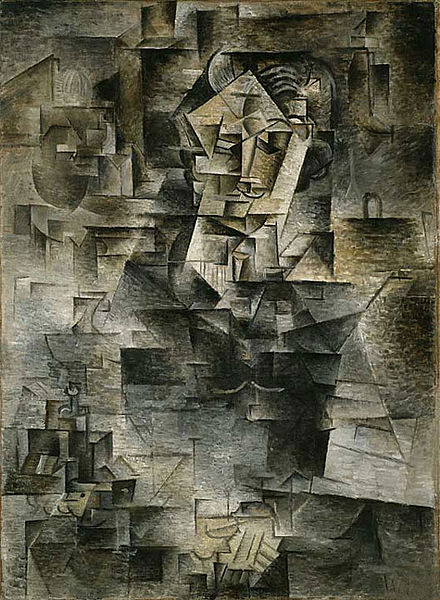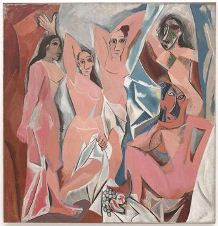Pablo Picasso – a Most Famous Artist

During Picasso’s early years he demonstrated extraordinary artistic talent, painting in a realistic manner through his childhood and adolescence. During the first decade of the 20th century, however, his painting style changed as he experimented with different theories, techniques, and ideas. His revolutionary artistic accomplishments brought him universal renown and immense fortune, making him one of the best-known figures in 20th-century art.
Picasso before his Career
Born in the Málaga in the Andalusian region of Spain, he was the first child of Don José Ruiz y Blasco (1838–1913) and María Picasso y López. Picasso’s family was middle-class. His father was a painter who specialized in naturalistic depictions of birds and other game. For most of his life Ruiz was a professor of art at the School of Crafts and a curator of a local museum. Ruiz’s ancestors were minor aristocrats.
From an early age Picasso showed a passion and a skill for drawing. From the age of seven, Picasso received formal artistic training from his father in figure drawing and oil painting. His father was a traditional, academic artist and instructor who believed that proper training required disciplined copying of the masters, and drawing the human body from plaster casts and live models. Unfortunately Picasso became preoccupied with art to the detriment of his classwork.
In 1891 the family moved to A Coruña where his father became a professor at the School of Fine Arts. They stayed almost four years. Observing the precision of his son’s technique, a story relates, Ruiz felt his thirteen-year-old son, Picasso had surpassed him in the art of painting, and vowed to give up painting himself. Paintings by him, however, do exist from later years.
Picasso as a Budding Artist

Picasso’s father and uncle decided to send the young artist to Madrid’s Royal Academy of San Fernando, the country’s foremost art school. At age 16, Picasso set off for the first time on his own, but following aan earlier trend, he disliked formal instruction and quit attending classes soon after enrollment. Picasso made his first trip to Paris in 1900, then the art capital of Europe. There, he met his first Parisian friend, the journalist and poet Max Jacob, who helped Picasso learn the language and its literature. Soon they shared an apartment; Max slept at night while Picasso slept during the day and worked at night. These were times of severe poverty, cold, and desperation. Much of his work was burned to keep the small room warm.
In 1907 Picasso joined an art gallery that had recently been opened in Paris by Daniel-Henry Kahnweiler. Kahnweiler was a German art historian and art collector who became one of the premier French art dealers of the 20th century. He was among the first champions of Pablo Picasso and the Cubism that Picasso had jointly developed with Georges Braque.
Something Personal
From 1904 through 1927 and later Picasso had affairs and mistresses. During wartime period, Picasso took up writing as an alternative outlet. Between 1935 and 1959 he wrote over 300 poems. They were largely untitled except for a date and sometimes the location of where the poem was written, these works were gustatory, erotic and at times scatological. In later years Picasso constructed a huge Gothic home, and could afford large villas in the south of France, such as Mas Notre-Dame-de-Vie on the outskirts of Mougins, and in the Provence-Alpes-Côte d’Azur. Picasso was an international celebrity, with often as much interest in his personal life as his art. In addition to his artistic accomplishments, Picasso made a few film appearances, always as himself, including a cameo in Jean Cocteau’s Testament of Orpheus. In 1955 he helped make the film Le Mystère Picasso (The Mystery of Picasso).

Picasso’s Art
Picasso’s work is often categorized into periods. While the names of many of his later periods are debated, the most commonly accepted periods in his work are the Blue Period (1901–1904), the Rose Period (1905–1907), the African-influenced Period (1908–1909), Analytic Cubism (1909–1912), and Synthetic Cubism (1912–1919).
- Blue Period – (1901–1904) consists of somber paintings rendered in shades of blue and blue-green, only occasionally warmed by other colors. This period’s starting point is uncertain. Many paintings of gaunt mothers with children date from this period. In his austere use of color and sometimes doleful subject matter – prostitutes and beggars are frequent subjects.
- Rose Period – (1904–1906) is characterized by a more cheery style with orange and pink colors, and featuring many circus people, acrobats and harlequins known in France as saltimbanques. The harlequin, a comedic character usually depicted in checkered patterned clothing, became a personal symbol for Picasso. The generally upbeat and optimistic mood of paintings in this period is reminiscent of the 1899–1901 period (i.e. just prior to the Blue Period) and 1904.
- African-influenced – (1907–1909) begins with the two figures on the right in his painting, Les Demoiselles d’Avignon, which were inspired by African artifacts. Formal ideas developed during this period lead directly into the Cubist period that follows.
- Cubism – (1909–1912) Analytic cubism is a style of painting Picasso developed along with Georges Braque using monochrome brownish and neutral colors. Both artists took apart objects and “analyzed” them in terms of their shapes. Picasso and Braque’s paintings at this time have many similarities.
- Synthetic cubism – (1912–1919) was a further development of the genre, in which cut paper fragments – often wallpaper or portions of newspaper pages – were pasted into compositions, marking the first use of collage in fine art.
Picasso’s most Famous Works

Picasso, Henri Matisse and Marcel Duchamp are commonly regarded as the three artists who most defined the revolutionary developments in the plastic arts in the opening decades of the 20th century, responsible for significant developments in painting, sculpture, printmaking and ceramics.
Pablo Picasso major exhibitions are often held in various places in the world. There has been at least one postage stamp of him as well as a museum dedicated to him as well as several statues designed by him.
&npsp;
Click here for Quotes by Pablo Picasso
